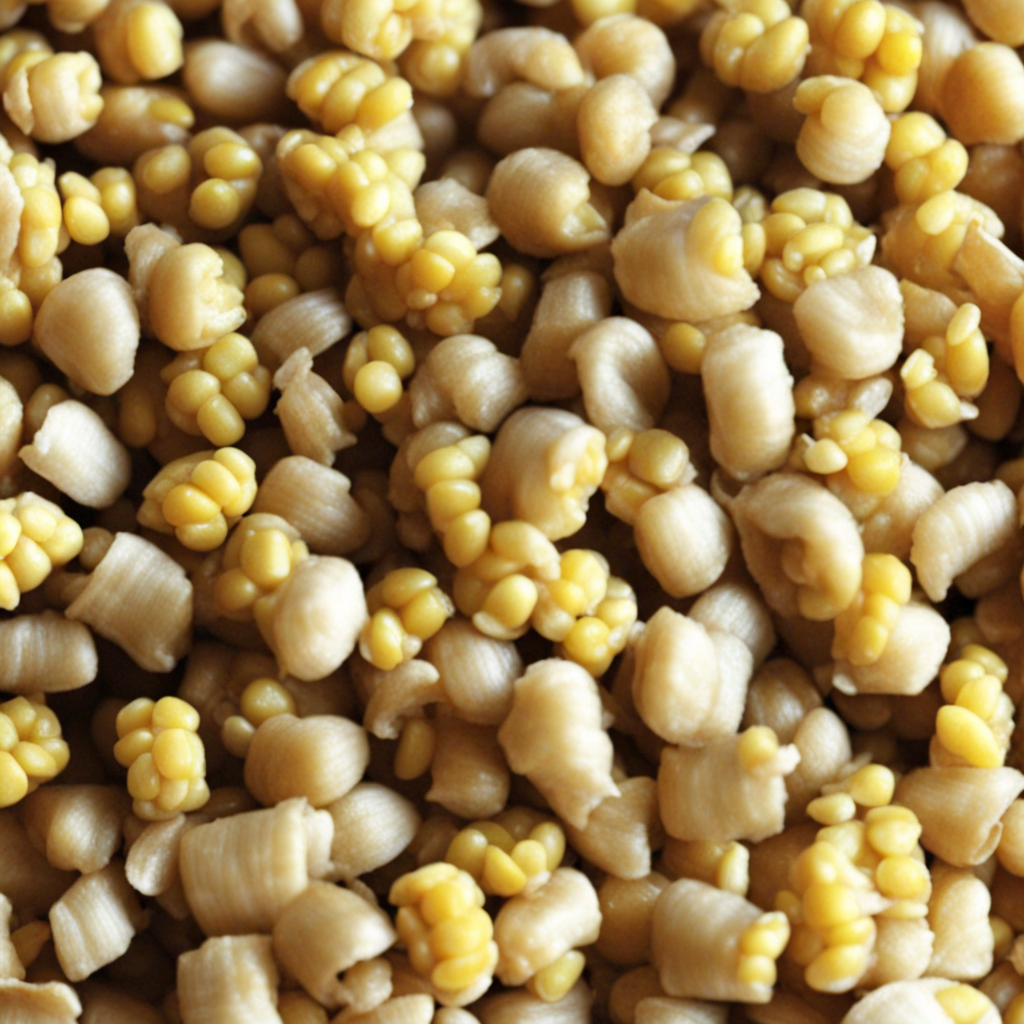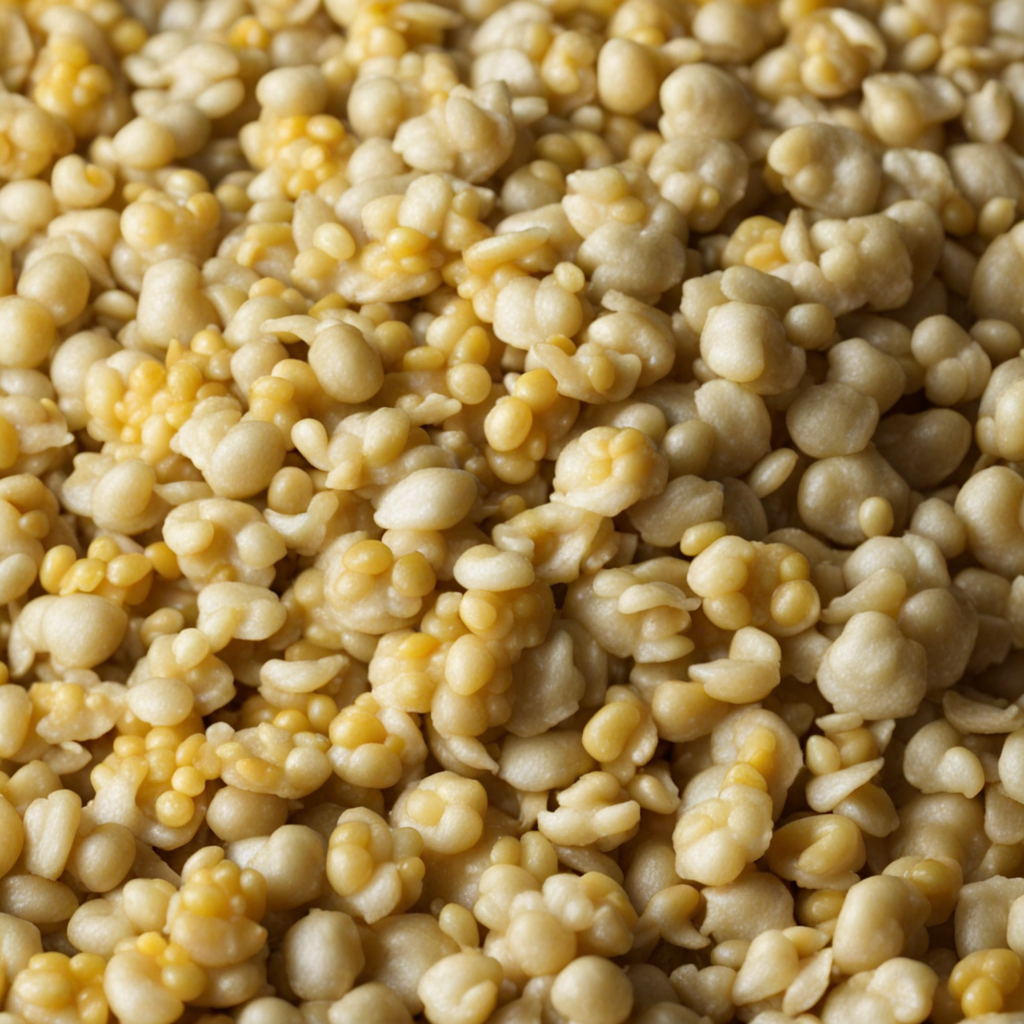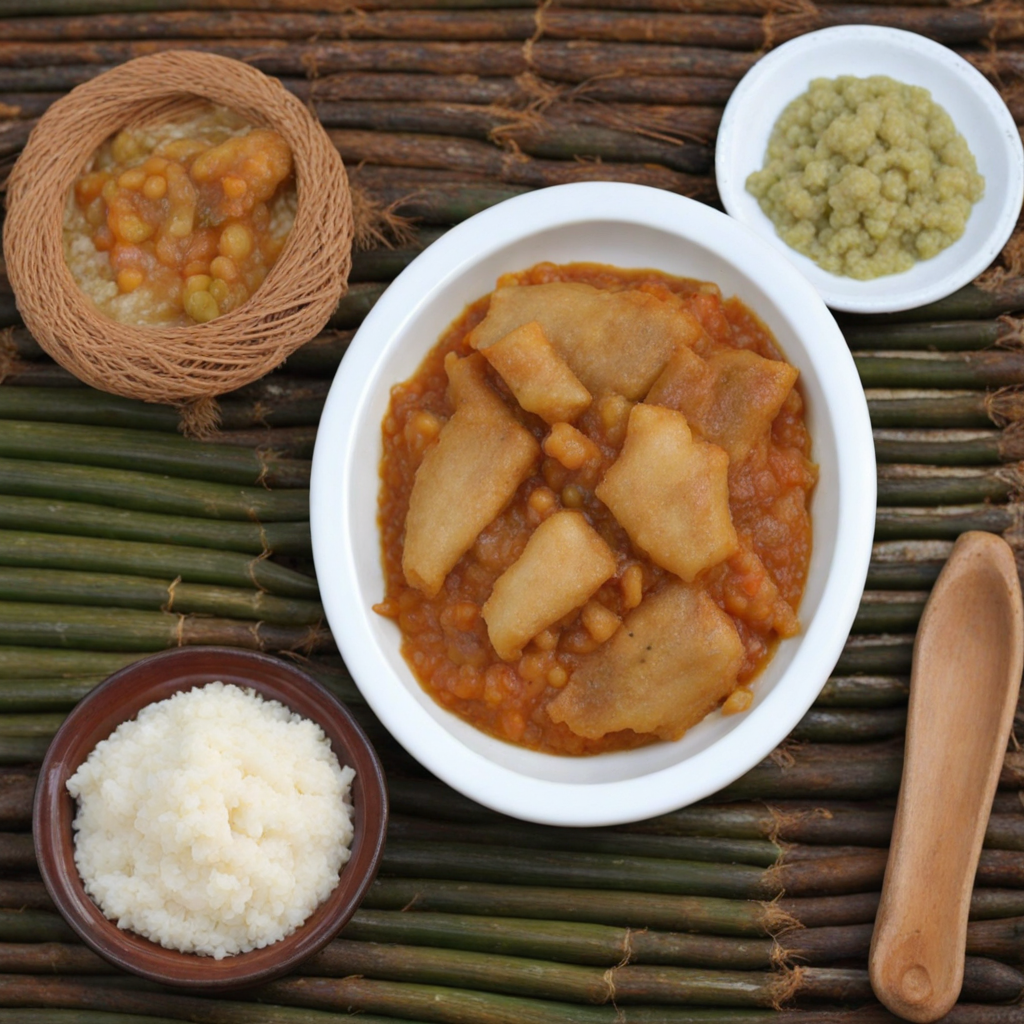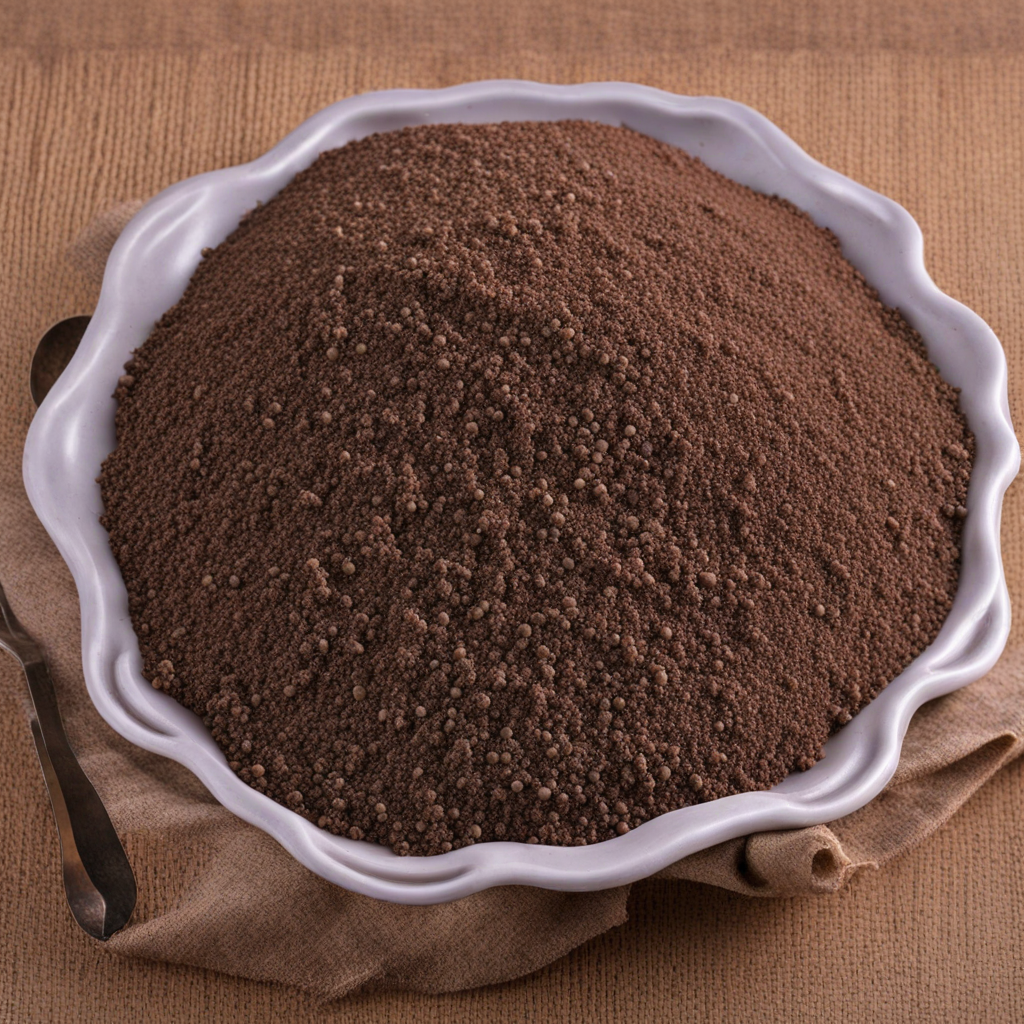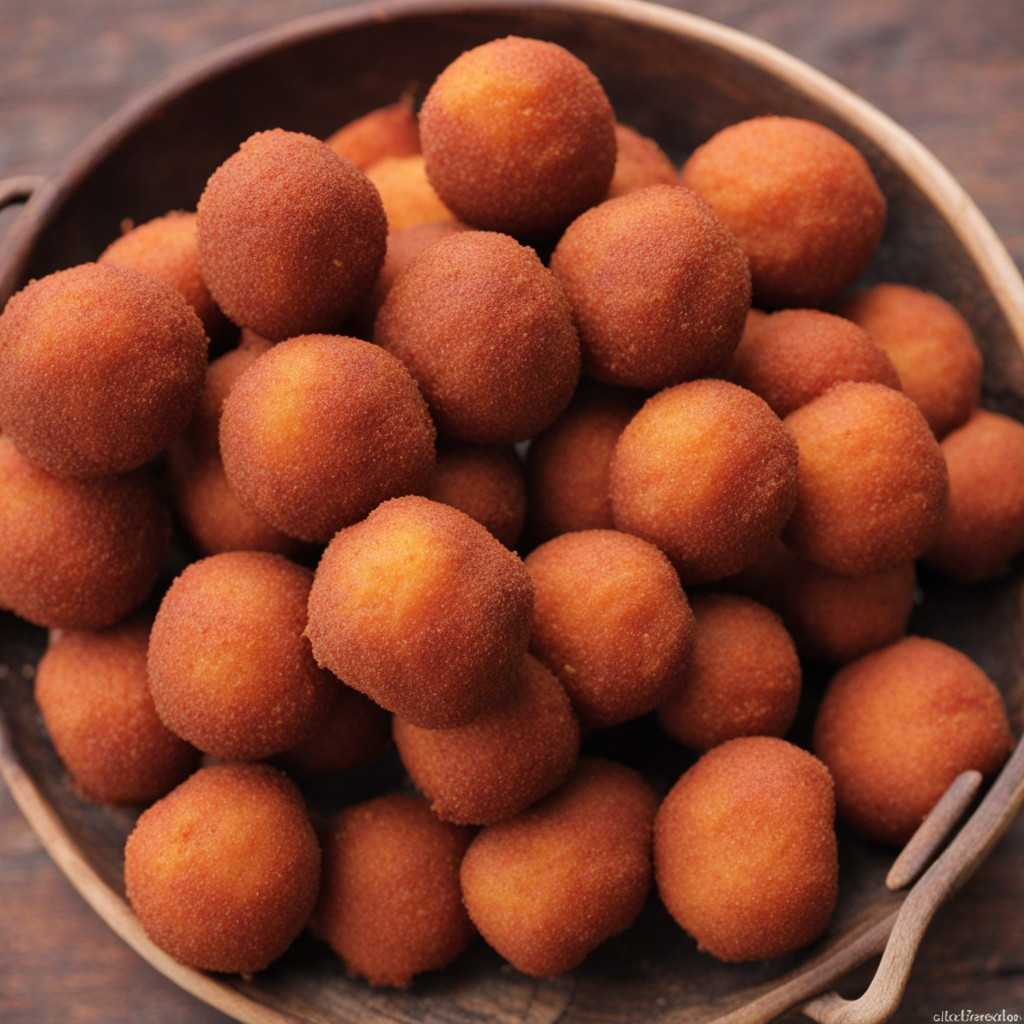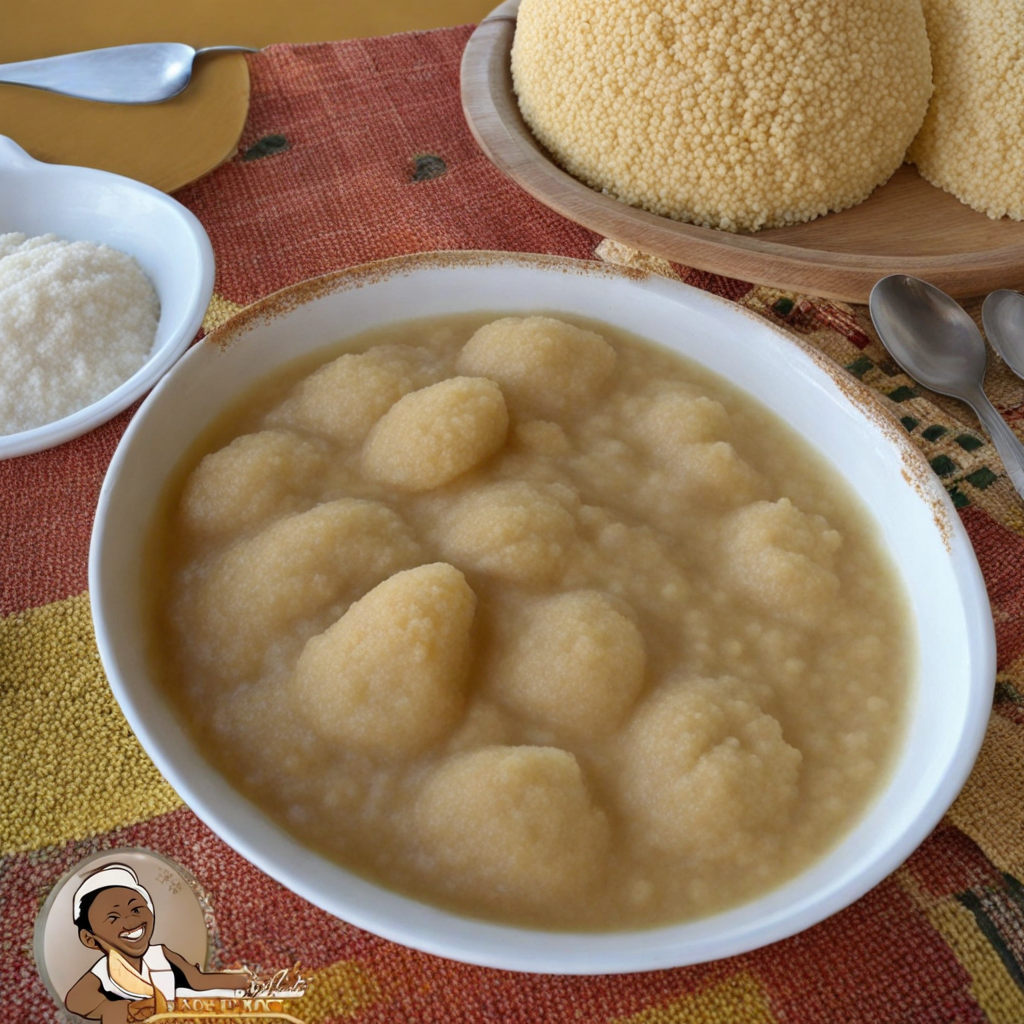Samp
Samp, a traditional Zambian dish, is a delightful delicacy made from coarsely ground corn (maize) that has been soaked and then cooked to create a creamy, hearty texture. This staple food is often enjoyed as a side dish, complementing a variety of stews and meats, making it a beloved choice in Zambian households. The preparation of samp is a labor of love, with the corn being pounded or processed until it reaches the desired consistency, which is then boiled until tender, resulting in a dish that is both filling and nutritious. One of the most appealing aspects of samp is its versatility. While it serves as a base for many traditional meals, it can also be flavored with various spices, herbs, and even vegetables, allowing for a fusion of tastes. When served with rich, savory sauces or relishes, such as groundnut (peanut) stew or vegetable medleys, the creamy nature of the samp absorbs all the flavors, creating an unforgettable taste experience. This adaptability makes it a perfect canvas for culinary creativity, inviting food enthusiasts to explore different flavor profiles. In Zambia, samp is not just food; it’s a symbol of community and tradition. Often enjoyed in gatherings and celebrations, it brings people together, fostering a sense of belonging through shared meals. The dish is typically eaten with the hands, which enhances the communal experience, as diners share and savor the flavors together. For anyone looking to expand their palate, trying samp offers a genuine taste of Zambian culture and the warmth of its people, all wrapped up in a comforting bowl of corn goodness.
How It Became This Dish
The History of Dehulled Corn in Zambia #### Origins Dehulled corn, known locally as "mealie meal," is a staple food in Zambia, deeply embedded in the country’s agricultural practices and culinary traditions. The origins of corn (Zea mays), also known as maize, trace back to its domestication in southern Mexico around 9,000 years ago. However, the journey of corn into Africa and specifically into Zambia is a tale of cross-continental exchange and adaptation. Maize was introduced to Africa by Portuguese traders in the late 15th century. Once it reached the continent, it quickly adapted to various environments and became a critical crop for many African communities. In Zambia, maize thrived in the fertile soils and favorable climate, becoming a cornerstone food source. This adaptability, combined with the crop's high yield, made it an ideal staple, particularly in the southern and eastern regions of the country. #### Cultural Significance In Zambian culture, dehulled corn is more than just food; it represents sustenance, community, and tradition. The process of dehulling, which involves removing the outer husk of the corn, is crucial for preparing maize for consumption. Traditionally, this process was done manually, using a mortar and pestle, or in larger communal settings where women would gather to hull the corn together. This not only fostered community bonds but also reinforced the role of women in agriculture and food preparation. Maize is a versatile ingredient, foundational to many Zambian dishes. One of the most common forms is "nsima," a thick porridge made from dehulled corn flour. Nsima is often served with various relishes, such as vegetables, beans, or meat, and is a central part of daily meals. It is customary for families to share nsima, symbolizing unity and hospitality. The act of sharing food is a cultural pillar in Zambia, where communal meals are an important aspect of social gatherings, celebrations, and rituals. Maize, especially in its dehulled form, also plays a significant role in traditional ceremonies and rituals. During harvest festivals, communities come together to celebrate the maize harvest, which is often accompanied by traditional music and dance. These events not only mark the importance of maize as a food source but also highlight its symbolic value in representing abundance and the blessings of the land. #### Development Over Time The cultivation and consumption of dehulled corn have undergone significant changes over the centuries. In the pre-colonial period, Zambian communities relied on indigenous agricultural practices, using traditional farming methods passed down through generations. Maize was integrated into polyculture systems, where it was grown alongside other crops such as cassava and millet, promoting biodiversity and food security. With the arrival of British colonial rule in the late 19th century, agricultural practices in Zambia began to shift. The colonial administration promoted the growing of cash crops, such as tobacco and cotton, often at the expense of staple foods like maize. However, maize remained resilient, and its cultivation continued to flourish, particularly among smallholder farmers. The colonial period also saw the introduction of hybrid maize varieties, which were developed to increase yields. While these hybrids provided benefits, they also created dependencies on external seed supplies and agricultural inputs. Post-independence in 1964, Zambia experienced significant political and economic changes that impacted agriculture and food systems. The government placed a strong emphasis on maize production, recognizing its importance for national food security. Programs were implemented to promote maize farming, and dehulled corn became a focal point in efforts to combat hunger and malnutrition. The establishment of the Food Reserve Agency (FRA) aimed to stabilize maize prices and ensure that farmers received fair compensation for their crops. Despite these efforts, the agricultural sector faced numerous challenges, including droughts, pests, and fluctuating market prices. The reliance on maize as the primary staple also raised concerns about dietary diversity and sustainability. In recent years, there has been a growing movement to diversify crops and encourage the consumption of other local foods alongside maize. However, dehulled corn remains central to the Zambian diet. #### Modern Perspectives In contemporary Zambia, dehulled corn continues to be a vital part of the economy and culture. The rise of urbanization has changed food consumption patterns, leading to increased demand for processed maize products. This includes corn flour, which is widely available in urban markets and is often used in convenience foods. The growth of local milling industries has made dehulled corn more accessible, allowing for greater food security in urban areas. Zambia's agricultural policies have also started to embrace sustainability and climate resilience. Initiatives aimed at promoting agroecological practices and improving the livelihoods of smallholder farmers are gaining traction. These efforts are essential for ensuring that the cultivation of maize, including dehulled corn, remains viable in the face of climate change. Furthermore, there has been an increased recognition of the nutritional value of maize. In response to rising concerns about nutrition, organizations have begun to promote the fortification of maize flour with essential vitamins and minerals, addressing deficiencies that have historically plagued the population. This shift towards improving the nutritional profile of dehulled corn aligns with broader global efforts to combat malnutrition and promote healthier diets. #### Conclusion Dehulled corn in Zambia is far more than a simple food item; it embodies a rich historical narrative shaped by indigenous practices, colonial influences, and contemporary challenges. As Zambia continues to navigate the complexities of modern agriculture and food systems, dehulled corn remains a symbol of resilience, cultural identity, and communal ties. Its significance transcends mere sustenance, serving as a testament to the enduring relationship between people, land, and food. The future of dehulled corn in Zambia will inevitably evolve, but its roots in history, culture, and community will continue to nourish the nation for generations to come.
You may like
Discover local flavors from Zambia


